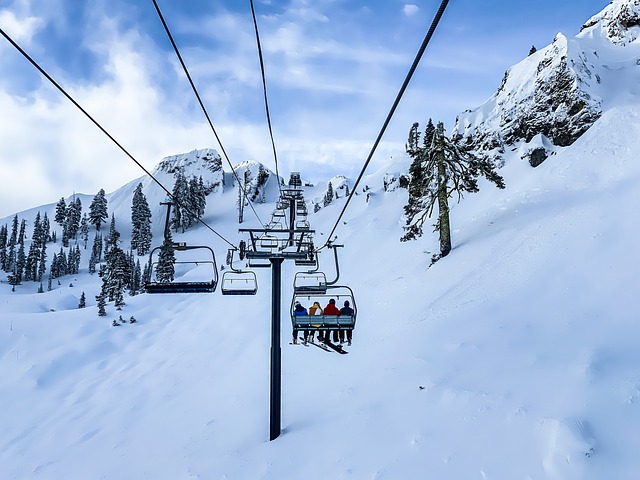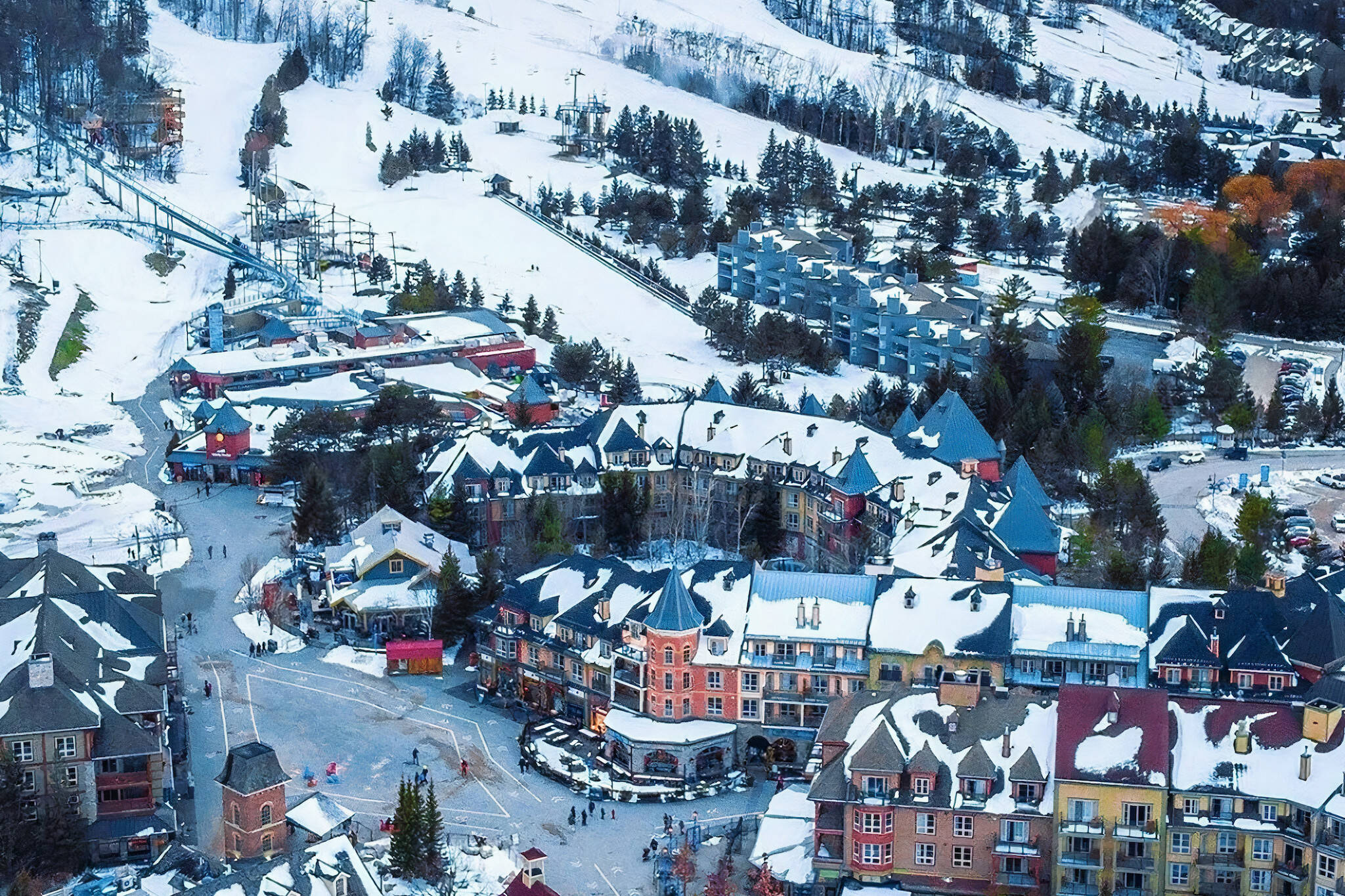
Both all-mountain and freeride skis are great options if you want to find skis that can perform in different conditions. It is important to know which skis are right for you.
Freeride or all-mountain? What's the difference?
The all-mountain range of skis is designed for those who are a jack of all trades and enjoy trying out different slopes every day. These skis are capable of handling everything, from groomed slopes to moguls, crud, crust and fresh powder.
They are usually wider than standard piste skis. The rocker profile allows them to float on soft snow. To make them easier to turn and improve maneuverability on variable snow off-piste, they have a long, rockered tip.
There are many length options available, depending on what you need. Longer models are best for challenging terrain and deep powder. If you're new to skiing, it's recommended to start off with a shorter length that will make your first turns easier and more manageable.

People who are more skilled at carving will prefer shorter skis. These skis are a little lighter than a freeride model and so will be much less stiff and heavy.
Skis that are all-mountain are ideal for intermediate and advanced skiers, who wish to experience a variety slopes without having to use a separate set. Skiers with experience who wish to practice their skills before venturing off-piste can also use them.
All-mountain skis have a larger width than the freeride range. The underfoot is also wider (100mm-115mm), which allows for better grip on groomers. These skis can be faster than freeride models in the same area, but will not hold well on hardpacked or frozen terrain.
The majority of all-mountain skis feature a directional, hybrid camber profile. This distributes weight evenly across the skis and creates a looser feeling between your feet. It helps improve turn-initiation as well as stability on groomers.
A freeride is a great option for skiers who love to explore off-piste terrain and tackle varying and challenging conditions. These skis are what you'd find in terrain parks or on the sidelines at telemark competitions, where riders must navigate steep terrain smoothly.

A wide range of mountain sports enthusiasts also use them to go backcountry skiing and for ski touring. These skis can be used to navigate rough and rocky terrains where other skis won't.
It is important to consider the shape of your freeride, such as whether you plan on riding in the park and how much money you are willing pay. Some skis are symmetrical so they have the same dimensions on both the tips and tails, while others are twin tip. These can prove to be extremely helpful when you're trying out kickers, switches or jumping off jumps.
FAQ
Do I need travel insurance?
Travel insurance is essential if you are planning on doing something adventurous. It is important to have insurance that covers all types of adventure sports.
If you're skiing, for example, it is important to have medical coverage. You should also think about getting coverage for theft loss and damage.
It is also worth considering purchasing cancellation cover. You can cancel your holiday without incurring any penalty.
In addition, you should ask for cover for emergency evacuation. In the case of an avalanche and other natural disaster, you can be evacuated from the mountain.
What documents should I keep handy when traveling?
You can always access important documents while you are on the road by keeping copies at home. If you plan on using an ATM machine, you may want to keep a copy of your passport, driver’s license and other official identification cards.
A photocopy of your passport is always a good idea so that it can be used to prove identity in case of emergency.
Don't forget to attach copies of your itinerary or reservations. These will help you remember where you are going and what you plan to see.
As well as this, you should keep a copy of your flight ticket and hotel reservation details. You will be able to reach someone back home if there is any trouble.
Finally, it's always a good idea not to leave anything valuable unattended. Your valuables will be safe if you keep them in a money belt, or inside your luggage.
You can avoid expensive loss by checking your baggage before you travel.
Remember: It's always safer to keep things simple than to try to over-plan everything.
Relax and enjoy your trip!
What cheap accommodations are available when traveling abroad?
Hostels, hotels, guesthouses, and bed and breakfasts are all options for cheap accommodation.
Hostels are inexpensive and offer dorm-style rooms where guests share bathrooms and living areas.
Hotels are often located in tourist areas. They offer private rooms with en-suite bathrooms.
Hostels have similar features to guesthouses, but they are more spacious and can accommodate fewer guests.
These beds and breakfasts are very well-liked by budget-conscious travelers. Guests are able to stay in private homes, and they can enjoy a full-service breakfast.
What snacks are allowed on an airplane?
You have many options for snacks to take with you when flying. Consider bringing any foods you like while on the road.
If you love chocolate, for example, you might want some chocolates and other treats like biscuits and crisps.
Perhaps you want something savory? You could pack some crackers or cheese.
It's also worth considering what kind of beverages you'd prefer to have aboard. Maybe you prefer something hot or cool?
Whatever type of snack or drink you decide to bring along, make sure they are all packed safely and securely.
So you don't have to worry that they might get damaged on the road.
What should you do first when you arrive at your destination?
It is a good idea to have a plan for when you get to a destination. This will help you plan what to do and where to go next.
It is important to plan ahead so you don't forget anything.
You should also research what museums, parks, or landmarks you want to visit if you are planning to visit a city more than once.
A map of the area may be useful and you might want to read up on the history.
How can I make traveling more enjoyable?
Traveling is not about just getting from point A and B. It should encompass all the experiences that are encountered along the journey.
We have developed an app called "Traveler", which allows you to create itineraries and plan your trip based on your interests.
We are currently adding new features like booking hotels, flights, and renting cars.
This project was created to provide a simple tool to help people plan their travels and make the most of what they have while on vacation.
What should you take on vacation?
You need to know what you want to do on your holiday. Not just packing clothes. You also need to consider where you are going and how long you are staying there.
Consider what type of activities you'd like to take part in. For instance, if you travel to exotic places, you may consider diving. If you are planning to stay somewhere longer, then you might want to take part in local festivals or events.
It is crucial that you inform the people responsible for your care if you have any health problems. They can then plan accordingly.
Statistics
- That's an 18% jump from 2019, the previous record year. (travelandleisure.com)
- According to Maori legends, this park holds 14 fjords that were all carved by a giant stonemason with an adze. (busytourist.com)
- You can use compression sacs or cubes to reduce the volume of your clothes by up to 80%—this is especially convenient for bulky items such as sweaters and jackets. (eaglecreek.com)
- They're also likely to offer babysitting services, in case you'd like to have dinner one night after 7 p.m. (travelandleisure.com)
- Alcoholic beverages with 24% alcohol or less are not subject to limitations in checked bags. (tsa.gov)
External Links
How To
How to plan for your next holiday
Planning a trip requires many things, such as booking flights and hotels, car rentals, activities, and so on. You must also consider your budget, destination, weather forecast, and other important factors.
These are important points to remember when planning your next vacation.
We have created a step to guide that will help you plan your next trip. This guide has been prepared based on our experience and customer feedback. We hope that you will find the following guide useful in planning your next vacation.
Steps:
-
Your Budget is an important step in planning your trip. Before you can start planning where and what you will do, you must first know how much you are willing to spend. In the event that you don't have enough cash, you might need to cancel your plans.
-
Book Your Tickets - Once you've decided on your budget and set your priorities, booking your flight tickets is the first thing that you should do. Make sure you choose the best flight deal available at the lowest price. You should also check to see if any airlines offer special deals during specific seasons. These deals can save you lots of money.
-
You can choose your destination - Once you have purchased your ticket, you need to decide where you would like to go. Numerous factors go into choosing your destination.
-
Locate Accommodations – After you've chosen your destination, you need to locate accommodations. You have many accommodation options, from hostels and luxury suites to choose from. The best type of accommodation for you depends on your requirements and preferences. If you need to be near the city center, a hotel may not suit your needs. If you prefer quiet, peaceful places, a homestay may be the best option.
-
Select Activities & Attractions: Now that you have selected your accommodation, it is time to decide which activities and attractions to include in the itinerary. Depending on the length of your stay, you can either choose only a few activities or add several new ones throughout your trip.
-
Determine Schedule - Now that you've selected the activities and attractions you'd like to include, it's time to determine your itinerary. It is important to stick to a schedule in order for maximum enjoyment of your trip. It's okay to be flexible and enjoy your vacation more.
-
Make an itinerary - This is where you include all details about your trip. It is important to write down everything you need, from accommodation to meals, to activities to restaurants, and to create a list.
-
Research Online – Make sure you research everything before you leave on your trip. Find out what other travelers have to say about different destinations by reading reviews and testimonials. This way, you will be able to plan accordingly.
-
Don't Overpack - This is one of the most common mistakes people make when packing. Instead of bringing five sets of clothes, bring three. Make sure you bring clothes that are appropriate for the area.
-
Always be prepared Get everything organized before you head out on your trip. It's not a good idea to spend time looking for documents while you are still on the move.